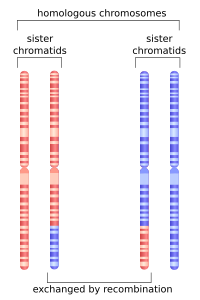
Photo from wikipedia
Mainstream approaches that are currently used as anti-aging therapies primarily explore the senescence and epigenetic drift aging hallmarks and they are at two ends of the spectrum. While senolytic therapies… Click to show full abstract
Mainstream approaches that are currently used as anti-aging therapies primarily explore the senescence and epigenetic drift aging hallmarks and they are at two ends of the spectrum. While senolytic therapies include either the selective elimination of senescent cells or the disruption of their secretome with the use of drugs or natural compounds, cellular reprogramming uses genetic manipulation to revert cells all the way back to pluripotency. Here, we describe the progress that has been made on these therapies, while highlighting the major challenges involved. Moreover, based on recent findings elucidating the impact of mitotic shutdown and aneuploidy in cellular senescence, we discuss the modulation of mitotic competence as an alternative strategy to delay the hallmarks of aging. We propose that a regulated rise in mitotic competence of cells could circumvent certain limitations that are present in the senolytic and reprogramming approaches, by acting to decelerate senescence and possibly restore the epigenetic landscape.
Journal Title: International Journal of Molecular Sciences
Year Published: 2019
Link to full text (if available)
Share on Social Media: Sign Up to like & get
recommendations!